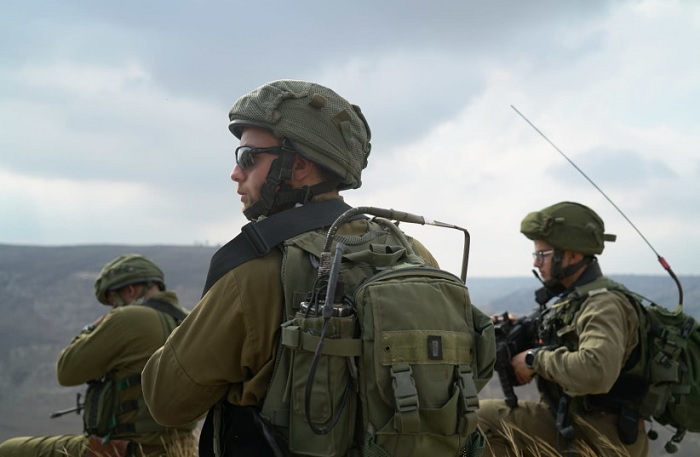
Explosive devices were in Israeli territory, close to location where IDF foiled terror attack in the summer.
The IDF has found improvised explosive devices (IEDs) in Israeli territory near the border with Syria in the southern Golan Heights, the military said on Tuesday.
Engineering units neutralized the explosives that were found close to where the IDF thwarted an attempt by terrorists to place explosives about three months ago.
“The IDF considers the Syrian regime responsible for any action taken in its territory and will not allow any violation of Israeli sovereignty,” the military said in a statement.
Defense Minister Benny Gantz, who was on a tour of the Northern Command on Tuesday said that the Syrian state was responsible for the explosive that were found.
Gantz, who was accompanied by Minister of Civil and Social Affairs at the Defense Ministry Michael Bitton, Chief of Staff Lt.-Gen. Aviv Kochavi, Head of the Northern Command Maj.-Gen.Amir Batam, Division 91 Commander Brig.-Gen.Shlomi Binder and other senior officers, received a security briefing on the readiness of troops as well as a situational assessment in the division and toured the northern border.
“We have long been prepared for the possibility of terror attacks in the northern sector,” he said. “The IDF has the capabilities and the determination to respond severely to any incident that occurs, both on the Lebanese and Syrian fronts. A few hours ago, explosive devices were discovered on the Golan Heights. I want to say clearly – Syria is responsible for what occurs on its territory like these explosive devices as well as in the context of the continued arms smuggling to Hezbollah. We will not move on this matter.”
In August, IDF troops from the elite Maglan reconnaissance unit foiled an attempt to place explosives along the border fence with Syria. The four-member cell was killed when the IDF force supported by aircraft attacked them.
Following an investigation of the scene, some 25 meters from the perimeter fence inside Israeli territory, weapons and a bag containing a number of explosive devices were found. The action taken against the cell placing the explosives on the border fence was later followed by Israeli airstrikes targeting Syrian positions.
IDF Chief of Staff, Lt.-Gen. Aviv Kochavi, met with the troops that foiled the attack and told them that the cell was sent by Iran.
“You thwarted a terrorist attack ordered by Iran, which is in the process of establishing a radical axis in Syria,” Kochavi said, adding “a squad of terrorists wanted to cause us harm but you prevented them from touching us. This is what is demanded of you. This is what is expected of you and this is what you did in a most professional way.”
Israel has repeatedly warned of Iran’s aspirations of regional hegemony and has admitted to carrying out hundreds of air strikes as part of its “war-between-wars” (known in Hebrew as MABAM) campaign to prevent the transfer of advanced weapons to Hezbollah in Lebanon and the entrenchment of its forces in Syria where they could easily act against Israel.
Although Israel usually refrains from targeting terror operatives to try to avoid subsequent retaliation, some strikes ascribed to the Jewish State have killed several Hezbollah operatives in southern Syria on the Golan Heights where the group has been trying to establish a permanent military presence.
According to a report by the ALMA Research and Education Center, Hezbollah’s presence in southern Syria is much larger than previously revealed, with some 58 sites where the terror group’s Southern Command and Golan Project have been deployed.
The report, which is based on Syrian opposition websites and cross-referenced with actual locations of sites (some military) damaged by Israel, revealed 58 locations belonging to Hezbollah in the southern Syrian provinces of Quneitra and Dara’a.
Although the Israeli military revealed Hezbollah’s network on the Syrian Golan Heights last year, the deployment of the group’s forces was not completely known, with less than a dozen places known in the province of Quneitra.
In the newly released report, ALMA identified 28 locations with Hezbollah forces deployed as part of the Southern Command unit and another 30 locations where cells operate under the Golan Project.
Cells belonging to the Golan Project and Southern Command have already carried out attacks against the IDF and should a war break out, the IDF expects it will not be contained to one front, but along the entire northern border with both Lebanon and Syria.
 Eurasia Press & News
Eurasia Press & News

